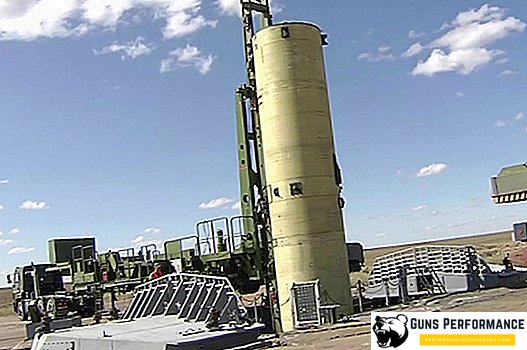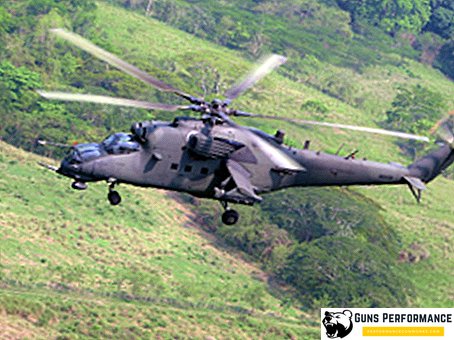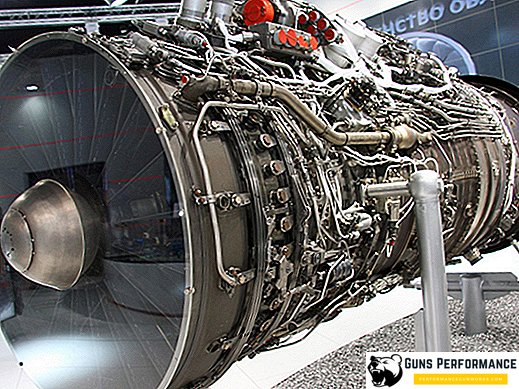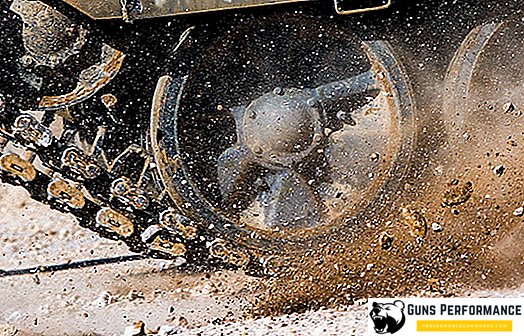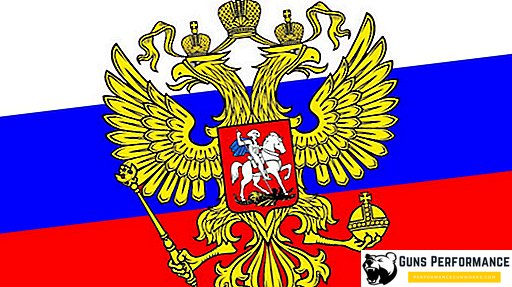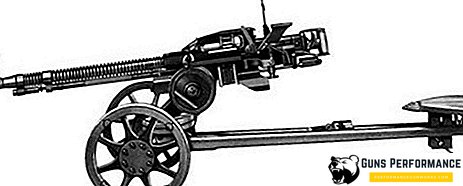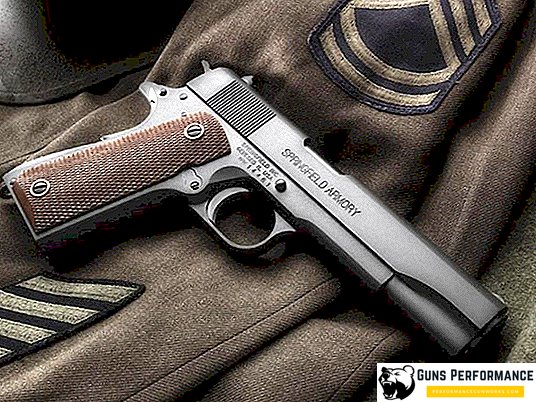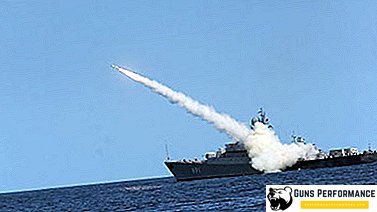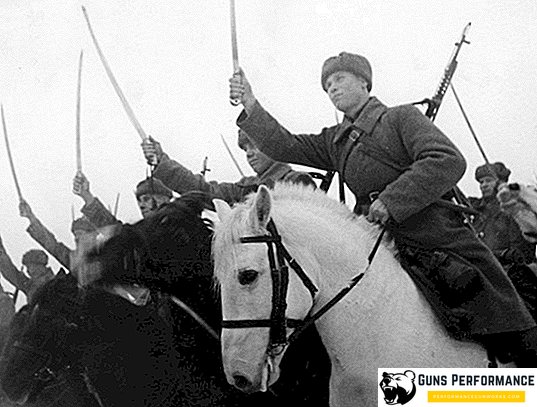
It would seem that so much has been written about this type of cold weapon that it is almost impossible to add anything new. However, so many legends and myths have been created around the checkers that only no less numerous stories about the Japanese katana can argue with them.
What place did this Cossack weapon actually occupy in the armament complex of the Russian army? What was the real felling of a saber? And what are the cardinal differences between the Cossack drafts and sabers, which for centuries have been used in Europe and in the East?
A checker is a type of dlinnoklinkovogo cold weapons, which can be used as a stabbing and chopping. Blade checkers single-edged, weakly curved, the total length of the weapon usually does not exceed one meter. Sometimes (quite rarely) there are also specimens with one-and-a-half sharpening. Ephesus checkers consists of a curved handle without guard, which is a characteristic hallmark of this weapon.
For checkers, they usually made wooden sheaths, leather-covered on top and having special rings for wearing on a sword belt. The peculiarity of the checker was that it was always worn with the blade up.

Two types of drafts were used in the Russian army: with a bow (dragoon type) and without it (Asian or Caucasian type). Checkers, which had a handle on the hilt, very much resembled a usual saber, but, nevertheless, they did not belong to this type of weapon.
Cossack saber was used for centuries. After the Cossacks became part of the regular cavalry, the sword entered the armament complex of the Russian army. At the end of the XIX century, an attempt was made to unify this weapon, as a result of which checkers of the 1881 model appeared.
The sword can be considered the latest type of cold weapons, which the regular army massively used. We are talking about cavalry units of the Red Army, who took an active part in the battles of the Great Patriotic War. Together with the Soviet horsemen, shashka met a victory in defeated Berlin. After the abolition of cavalry saber turned into an exclusively ceremonial weapon, and today they are armed with military personnel who are part of the guard of honor.
In the 1950s, the serial production of drafts in the Soviet Union was discontinued.
Cossack drafts history
The myths about the Cossack saber are inseparable from the representatives of the military estate that used it. The most common misconception is related to the origin of these weapons. Many still believe that the shash is a weapon that was born in the Cossack environment. This is not true.

Cossacks - as a social and political phenomenon - emerged in the border areas, where there was practically no state power, but there was a constant military threat. The Cossack armament complex was formed under the influence of the peoples around them, and the main role models were not Polish or Russian samples. The main source for borrowing was Turkey and the Great Steppe. And it's not just about weapons. Long mustache, forelock, bright trousers, curved swords, and the very tactics of warfare - judge for yourself who it reminds you: Europe or the way of the nomadic peoples of the Black Sea region? You can also add that the Cossack arsenal was often formed at the expense of military trophies.
The checker is no exception. Cossacks borrowed these weapons in the Caucasus. It is believed that the Adygei (Circassians) came up with the saber, from whom the Kuban and Terek Cossacks “borrowed” it. The checker was already known in the XII-XIII centuries, but for a long time it was only an auxiliary weapon, which only supplemented the sword or sword, and kept its pedigree from a large knife. Initially, the sword was worn almost under the arm of the left hand, while it was necessarily suspended with the blade up. In the Adyg language, this weapon is called "seshkhue" or "saskho", which means "big or long knife." The first written description of drafts dates back to 1625.
The officer of the Russian army, F. F. Tarnau, who served in the 30s of the XIX century in the Caucasus, recalled that the most terrible weapon of the Circassians was a checker, which they called "sazhenshkhua." According to Tarnau, this weapon had a razor sharpness and was used by the mountaineers for striking, not for defense. Wounds inflicted by swords were often fatal.
Only after the wide spread of firearms and the complete elimination of the use of massive metal armor, does the saber begin to crowd out the saber. First it happened in the Caucasus, and then the regions that adjoined it. At the same time, the appearance of the weapon has undergone significant changes: the sword has become longer, more massive, its bend has become more pronounced.

Thoughts about the unification of cold arms, which was in service with the Russian army, arose from the army leadership almost immediately after the end of the Crimean War. However, this reform was constantly postponed. And only at the end of the XIX century, the checker was officially adopted by the cavalry units of the Russian army, as well as the officer corps and artillery servants. The only exceptions were the hussar and lancer regiments, as well as some parts of the Life Guards, which, as before, continued to use sabers. In addition, the sword became the authorized weapon of the police and gendarmerie. This reform was led by Lieutenant General A. P. Gorlov.
One of the main disputes of the military theorists of the XIX century, concerning cavalry, was the dispute that it is more effective in the battle for the rider: to chop with a sword or to prick with a broadsword. Each side had its own arguments and fiercely defended them. Western cavalry, cuirassiers and cavalier guard, were armed with broadswords intended to deliver piercing blows. But in the East, the rider’s main weapon for centuries was precisely the saber, which was used very effectively.
The reform of 1881 replaced all dragoon, cavalry and infantry sabers with dragoon and Cossack swords of a single type.
The dragoon saber on the hilt had a protective arch, for the Cossack drafts they decided to leave the traditional hilt. An artillery bombard was also put into service, which was a somewhat shortened version of the dragoon.

The soldier dragoon saber of 1881 had a blade with a slight bend, single-edged sharpening and a single broad dale. The combat end of the weapon was double-edged. The blade length was approximately 870 mm, and the total length of this weapon was 1020 mm.
The checker had a wooden sheath, leather-covered on top. Until 1888, the sheath had a special deck for storing the bayonet, later it was replaced with special sockets. The sheath had a metal mouth and tip. The hilt of a soldier's dragoon drafts consisted of a wooden handle with a metal head and guards. On the handle were made longitudinal inclined grooves. Garda was formed by the front bow, which gradually passed into the crosspiece. The second bow had a round hole.
The officer dragoon saber of 1881 had a blade of slight curvature with a double-blade sharpening at the combat end. The blade could have one wide dale or two narrow bits at the butt and a wide dale. The total length of the blade was approximately 810 mm, and the total length of the checker was 960 mm. The checker had a wooden sheath, leather-covered with a metal mouth and tip.
The hilt of the weapon also consisted of a wooden handle with a metal head and a guard with a front bow. In 1909, the hilt of the officer dragoon drafts was changed. The slope of the handle was increased, it received longitudinal grooves, a floral ornament appeared on the upper hub, as well as the emperor's monogram, during the reign of which the officer received his first rank.

The Cossack style checkers of 1881 were also of two types: officer and intended for the lower ranks. The blade of the Cossack checkers of the sample of 1881 had a relatively small bend (approximately 18 mm), its point was shifted to the middle line. We can say that the shape of the blade of the Cossack checkers completely repeated the geometry of the blade of similar types of dragoon checkers. The combat part of the weapon was double-edged.
It should be noted that in fact the warhead was rarely sharpened from two sides, usually it was done according to the individual desire of the owner. Butt, having reached the place on the blade, where the valleys ended (it is also called the “center of impact”), went to zero and formed a false blade. Such a structure of the blade is more characteristic of the eastern weapons. It is believed that during the strike such a blade can inflict a deeper wound.
Cossack saber for the lower ranks had a total length of 1020 mm and the length of the blade - 870 mm. She had a straight handle, which was separated from the blade molded bronze sleeve. The sheath of the Cossack swords for the lower ranks did not have a mount for the bayonet, as it was not provided for the Cossack carabiners.
The officer’s Cossack saber of 1881 had a total length of 960 mm and a blade length of 810 mm. In addition to size, it was distinguished from the soldier’s version by the shape of the handle and mounting design.
A new weapon almost immediately came under a barrage of criticism. As a result of the reform in 1881, the Russian army received a strange hybrid of broadsword and sabers. In fact, it was an attempt to create a weapon that would allow to use both an injection and a chopping shot in battle. However, according to contemporaries, nothing good came of it. The gunsmith Vladimir Fedorov, the future creator of the first Russian machine gun, wrote that the combat properties of the new checkers are noticeably inferior to both Eastern sabers and broadswords. Speaking bluntly, the new weapon is badly pricked and chopped up.

In the opinion of the same Fedorov, the new checker chopped it unsatisfactorily, because its blade did not have sufficient curvature, which distinguishes most sabers. In addition, in order for the saber to better stick, the line of its handle was directed to the point, which further worsened the cutting properties of the weapon. Also, the chopping properties worsened the location of the center of gravity of the weapon.
Almost immediately after the introduction of weapons into service, the question of replacing them arose. However, the process was again delayed, and later lost its relevance. Another time has come - the era of machine guns, artillery, tanks and combat aircraft.
Despite reforms and unification, other types of these weapons were used in the Russian army. For example, a checker sample of 1834 of the Asian type, officially approved in 1903. The Cossack saber of 1839 with a brass-bound handle should also be mentioned.
In 1917, the checker was adopted by the Red Army, except for the national Caucasian units, which continued to use their traditional weapons.
In 1928, the Red Army adopted a new model of the Cossack saber, which, however, differed little from the weapons of the 1881 model.
In 1940, a new parade for generals was introduced, which in 1949 was replaced by a dirk.

Since the 60s, checker has become a premium weapon.
Shortly after the war, the cavalry ceased to exist as a branch of service, and the serial production of checkers was discontinued. It was resumed in the late 90s of the last century, since the revival of the Cossacks caused a significant demand for these weapons.
Today, the shash is an integral attribute of the culture of the Russian Cossacks and one of the main elements of the traditional costume of the Cossacks.
The use of checkers in battle
There is a common myth about the high fencing properties of checkers and about the special skills of the Cossacks in this area. Alas, it is not true. The fact is that the saber is not very suitable for fencing at all.
This weapon does not have guards, due to which its center of gravity is greatly displaced. Therefore, the sword is almost impossible to defend against enemy weapons, but it is very handy to chop it. In appearance, the saber strongly resembles a saber, but in its functionality these are two completely different types of weapons.
To defend themselves with the help of checkers, to carry out complex fencing feints, volts and floss is unlikely to succeed. It is also poorly suited for stabbing, again due to the shifted center of gravity of the weapon and a weakly pointed tip, which was often not honed at all. But with the help of checkers it was possible to strike a good blow, reinforced by the inertia of the rider’s movement, which could “destroy” the adversary “to the saddle.” And dodge or close from such a blow is extremely difficult. It is for this property that cavalrymen loved this weapon.

The sword was worn with a blade upward, so that this weapon could be instantly removed from the sheath and in one motion applied a full blow to the enemy. The possibility of a first strike is one of the main advantages of checkers.
In addition, the checker had a very simple design, which made it simple both in manufacturing and in use. Basic training for recruits, cavalry handling the sword is usually reduced to a minimum.
No data about the special fencing skills of the Cossacks of the early, "pre-army" period, was preserved. The main system for the codification of military knowledge and skills are army manuals. So, in the "Charter of the Cossack Service", issued in 1889, for the checkers were provided only three options for use: horizontal cutting, vertical cutting and prick to the left. And having dismounted, the Cossack generally had to forget about the sword and act by the authorized Caucasian dagger. It should be noted that in this document much more space is given to the return of honor by the saber than to its use in equestrian combat. The main cold weapon of the Cossack divisions of the XIX century remained the peak.
In the "Stroyev statute of the cavalry of the Red Army" for 1938, the actions of a saber are reduced to the same basic actions: two types of cutting and several injections. True, much more attention is paid to the cavalryman's foot fencing, but for him it was supposed to use an espadron - a special fencing saber.
Most of the myths about the Cossack saber fencing masters appeared due to various choreographic ensembles, which during their performances use this weapon or something very similar to it. Such groups show the audience a truly impressive show, with breathtaking somersaults and waving checkers. There is nothing wrong with this, of course, but it is worth understanding that such representations are extremely far from the traditional military skills of the Cossacks.



